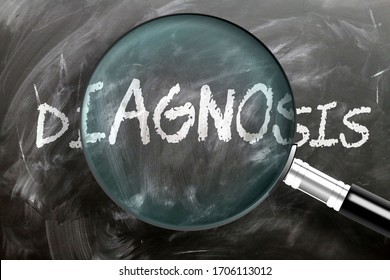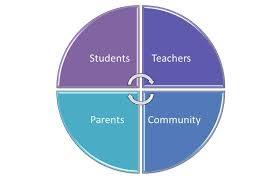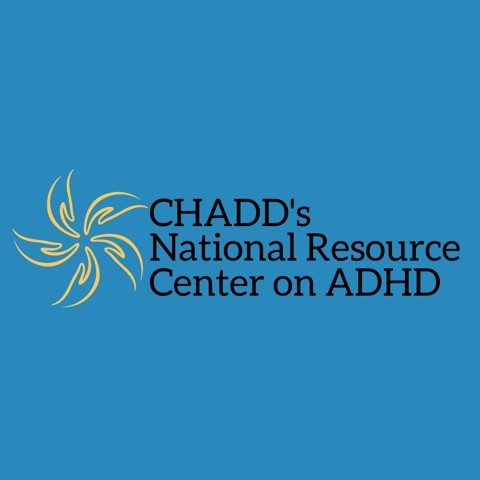Text

"It's like your brain keeps switching between 30 different channels and somebody else has the remote"
-Brett Thronhill
Welcome! Let me take you on this journey to learn about Attention deficit/Hyperactivity Disorder. Let's learn about this mental disorder, it's symptoms, causes, treatments, why it's important to diagnose early, consequences of untreated ADHD, resources and much more!
Now what exactly is ADHD?
"Attention deficit/Hyperactivity Disorder (neurodevelopmental disorder) is chronic condition marked by the inability to focus attention, or overactive and impulsive behavior, or both" (Comer, 2007, pg. 1279).
References:
1. Comer, R. J. (2007). Abnormal psychology. New York: Worth Publishers.
0 notes
Text
Why Diagnosis is Important

ADHD is also one of the most common disorders of childhood (What is ADHD?), despite this there might be a lot of bad and misleading information on the internet and about the data of the condition. There can be many misconceptions like ADHD is not real or that anyone can be diagnosed with it based on a list of behaviours we all experience at one or another time. ADHD is a lifelong disorder, some people may be affected by hyperactivity and inattention to any of them alone, everyone has different cases of severity in their diagnosis and that will significantly affect how well they are able to carry on with their daily life. The only way we can stop this stigmatization is by educating ourselves and spreading awareness. Early diagnosis and intervention may lead to a more effective, successful and shorter treatment period. Health care providers will be able to advise in treating symptoms and also discuss future health risks. Let's dive deeper into this topic in the next few posts!
References:
1. What is ADHD? (2021, January 26). Centers for Disease Control and Prevention. https://www.cdc.gov/ncbddd/adhd/facts.html
0 notes
Text
Factors affecting Diagnosis

The American Academy of Pediatrics and other groups that care for children suggest that ADHD be screened for and diagnosed as early as the preschool years (Wolraich, 2019).
There are many factors that determines the timing of diagnosis and treatment for an individual (Hamed, 2016).
1. Parents: Parents play a major role in the identification of ADHD symptoms in their children. "Many beliefs make parents not seek assessment for ADHD in their children like dietary factors, limitation of educational setting, not perceiving child behaviour as a burden, and having a higher threshold to tolerance of hyperactivity" (Hamed, 2016 as cited in Sayal, 2016). The motivation and ability to seek assessment may be affected by psychosocial stressors like financial difficulties having other children, and whether their child has inattentive ADHD, which can be perceived by parents as less problematic (Hamed, 2016 as cited in Sayal, Ford & Goodman, 2006). If parents are exposed to negative information about ADHD from social media or non-healthcare professions, they will delay the diagnosis for their child, and some parents even think some health care professions create business to create revenue from unnecessary treatments (Hervey, Douyon & Franco, 2006).
2. Health care Providers/Medical Role: There is limited access to mental health clinicians in the US and leads to most of the children being diagnosed by primary care physicians (Geltman et al., 2015). Limited reimbursement for specialist evaluation or mental health care is a also a factor in the diagnosis as ADHD requires a lot of time and extensive treatment (Wolraich, 2019).
3. Educator's Role: A support environment is very important in a child's life, and schools and teachers play an influential role for typical development and diagnosis of ADHD. "For diagnosis of ADHD accurate teacher ratings on the child's behaviour are needed, so the mental health community makes a significant impact when providing training to educators about the identification and management of children with ADHD" (Sayal, Ford & Goodman, 2010). It is very important that educators are trained properly due to the amount of time children spend at school during childhood.
References:
1. Wolraich, M. L., Hagan, J. F., Jr, Allan, C., Chan, E., Davison, D., Earls, M., Evans, S. W., Flinn, S. K., Froehlich, T., Frost, J., Holbrook, J. R., Lehmann, C. U., Lessin, H. R., Okechukwu, K., Pierce, K. L., Winner, J. D., Zurhellen, W. (2019). Clinical Practice Guideline for the Diagnosis, Evaluation, and Treatment of Attention-Deficit/Hyperactivity Disorder in Children and Adolescents. Pediatrics, 144(4), e20192528. https://doi.org/10.1542/peds.2019-2528
2. Hamed, A. M., Kauer, A. J., & Stevens, H. E. (2015). Why the Diagnosis of Attention Deficit Hyperactivity Disorder Matters. Frontiers in psychiatry, 6, 168. https://doi.org/10.3389/fpsyt.2015.00168
3. Sayal, K., Goodman, R., & Ford, T. (2006). Barriers to the identification of children with attention deficit/hyperactivity disorder. Journal of child psychology and psychiatry, and allied disciplines, 47(7), 744–750. https://doi.org/10.1111/j.1469-7610.2005.01553.x
4. Hervey-Jumper, H., Douyon, K., & Franco, K. N. (2006). Deficits in diagnosis, treatment and continuity of care in African-American children and adolescents with ADHD. Journal of the National Medical Association, 98(2), 233–238.
5. Geltman, P. L., Fried, L. E., Arsenault, L. N., Knowles, A. M., Link, D. A., Goldstein, J. N., Perrin, J. M., & Hacker, K. A. (2015). A planned care approach and patient registry to improve adherence to clinical guidelines for the diagnosis and management of attention-deficit/hyperactivity disorder. Academic pediatrics, 15(3), 289–296. https://doi.org/10.1016/j.acap.2014.12.002
6. Sayal, K., Ford, T., & Goodman, R. (2010). Trends in recognition of and service use for attention-deficit hyperactivity disorder in Britain, 1999-2004. Psychiatric services (Washington, D.C.), 61(8), 803–810. https://doi.org/10.1176/ps.2010.61.8.803
0 notes
Text
Consequences when ADHD is Not Treated

If ADHD is not diagnosed at an early age and is not treated there can be severe consequences. Untreated ADHD can pose a tremendous amount of psychological, financial, academic, and social burden to the individual and the community. "A lack of treatment for ADHD also impairs social and occupational functioning and increases the likelihood of developing comorbid disorders like anxiety, depression, personality disorders, antisocial behaviors, and SUD" (Huntley et al., 2012).
A longitudinal study done by Shaw and his colleagues showed that the long-term outcomes for participants with ADHD when left untreated were poor compared with non-ADHD individuals even though a point of normalisation was not reached. The outcomes that were in the study were drug use/addictive behaviour, academic and antisocial behaviour along with social function, self esteem, occupation driving, services use, and obesity outcomes.
References:
1. Huntley, Z., Maltezos, S., Williams, C. et al. (2012) Rates of undiagnosed attention deficit hyperactivity disorder in London drug and alcohol detoxification units. BMC Psychiatry 12, 223. https://doi.org/10.1186/1471-244X-12-223
2. Shaw, M., Hodgkins, P., Caci, H., Young, S., Kahle, J., Woods, A. G., & Arnold, L. E. (2012). A systematic review and analysis of long-term outcomes in attention deficit hyperactivity disorder: effects of treatment and non-treatment. BMC medicine, 10, 99. https://doi.org/10.1186/1741-7015-10-99
0 notes
Text
Symptoms and Criteria

Children with ADHD may have trouble paying attention, controlling impulsive behaviours, or be overly active. There are many symptoms that can be observed for in child with ADHD, a few of them are:
Forgetting, squirming, talking too much, daydreaming, making careless mistakes, having a hard time resisting temptation, not getting along with other children, trouble taking turns, etc (What is ADHD?).
According to the DSM-5 the criteria that has to met to be diagnosed with ADHD are:
If 6 or more of the following symptoms (Inattention and Hyperactivity) have persisted for at least 6 months to a level where it is inconsistent with developmental level and interferes with social and academic or occupational activities. (For older adolescents; 17 or above; at least 5 symptoms are required)
1. Inattention:
Symptoms: Failure to give attention or makes careless mistakes, doesn't listen when spoken to, does not follow instructions, difficulty being organised, does not show interest in tasks that need much mental effort, forgetful, easily distracted, and loses things.
2. Hyperactivity or Impulsivity:
Fidgeting, squirming, leaves situations where presence is expected, runs or climbs in places that are inappropriate, unable to do physical activity quitely, always active and on the go, talks a lot and answers before the question is completed, difficulty waiting for turn, and interrupting.
Apart from the symptoms the following criteria/conditions should be met:
1. Several inattentive and hyperactive-impulsive symptoms were present prior to the age of 12.
2. Several inattentive and hyperactive-impulsive symptoms are present before the age of 12 years.
3. There is evidence that these symptoms interfere with or reduce the quality of social, academic or occupational functioning.
4. These symptoms do not occur during the course of schizophrenia or another psychotic disorder and are not better explained by another medical disorder.
References:
1. What is ADHD? (2021, January 26). Centers for Disease Control and Prevention. https://www.cdc.gov/ncbddd/adhd/facts.html
2. American Psychiatric Association. (2013). Diagnostic and statistical manual of mental disorders (5th ed.). https://doi.org/10.1176/appi.books.9780890425596
0 notes
Text
Development and Course- Early Life and School Children

Let's take a look at how ADHD develops across different developmental stages in life:
Many parents observe excessive motor activity when the child is a toddler, but it is very difficult to differentiate symptoms from normative behaviours before 4 years of age (DSM-5). Although ADHD is typically diagnosed during school years, there is an increasing tendency for it to observed during preschool (Posner et al., 2007). We can see manifestations of ADHD in preschool children, like high activity levels, poor inhibition control, attention problems, but they are normative for that age group. However in clinical cases, these behaviours are more pronounced and can result in risky behaviour, physical injury, bad conduct through multiple settings, etc (Egger, Kondo & Angold, 2006).
During school age, diagnosis is more common because disruptiveness and academic difficulties are easily noticeable. "School aged children with ADHD show impairment in the form of academic grades, family and peer relationships, and have elevated rates of psychiatric comorbidity" (Reebye, 2008). In most individuals the symptoms of hyperactivity decreases and symptoms of inattention become more prevalent (DSM-5).
References:
1. American Psychiatric Association. (2013). Diagnostic and statistical manual of mental disorders (5th ed.). https://doi.org/10.1176/appi.books.9780890425596
2. Posner, K., Melvin, G. A., Murray, D. W., Gugga, S. S., Fisher, P., Skrobala, A., Cunningham, C., Vitiello, B., Abikoff, H. B., Ghuman, J. K., Kollins, S., Wigal, S. B., Wigal, T., McCracken, J. T., McGough, J. J., Kastelic, E., Boorady, R., Davies, M., Chuang, S. Z., Swanson, J. M., … Greenhill, L. L. (2007). Clinical presentation of attention-deficit/hyperactivity disorder in preschool children: the Preschoolers with Attention-Deficit/Hyperactivity Disorder Treatment Study (PATS). Journal of child and adolescent psychopharmacology, 17(5), 547–562. https://doi.org/10.1089/cap.2007.0075
3. Egger, H. L., Kondo, D., & Angold, A. (2006). The epidemiology and diagnostic issues in preschool attention-deficit/ hyperactivity disorder: A review. Infants & Young Children, 19(2), 109–122. https://doi.org/10.1097/00001163-200604000-00004
4. Reebye P. (2008). Attention–Deficit Hyperactivity Disorder: A Handbook For Diagnosis And Treatment, Third Edition. Journal of the Canadian Academy of Child and Adolescent Psychiatry, 17(1), 31–33.
0 notes
Text
Development and Course- Adolescence and Adulthood

"Many children show a lessening of symptoms when they reach mid adolescence" (Comer, 2007, pg. 1280). In adolescents hyperactivity is less common and is confined to fidgetiness or an inner feeling of restlessness or impatience. "The disorder is relatively stable throughout adolescence but for some individuals their conditions can worsen with the development of antisocial behaviours" (DSM-5). But, 60% of these children with severe symptoms continue to have ADHD as adults (Roy-Byrne et al., 2004). In adulthood there are symptoms of inattention and restlessness, and even though hyperactivity is reduced; impulsivity can still be an issue. Adults can suffer from unstable relationships, poor work performance, and low self esteem.
References:
1. American Psychiatric Association. (2013). Diagnostic and statistical manual of mental disorders (5th ed.). https://doi.org/10.1176/appi.books.9780890425596
2. Comer, R. J. (2007). Abnormal psychology. New York: Worth Publishers.
3. Roy-Byrne, P., Arguelles, L., Vitek, M. E., Goldberg, J., Keane, T. M., True, W. R., & Pitman, R. K. (2004). Persistence and change of PTSD symptomatology--a longitudinal co-twin control analysis of the Vietnam Era Twin Registry. Social psychiatry and psychiatric epidemiology, 39(9), 681–685. https://doi.org/10.1007/s00127-004-0810-0
0 notes
Text
Take a look at this ADHD iceberg to help you understand what ADHD really looks like!

0 notes
Text
Prevalence and Risk Factors

Now let's talk about how prevalent ADHD is in the population, it's risk factors and some empirical data.
"Population surveys show that ADHD occurs in most cultures in about 5% of children and 2.5% of adults. Around 7% of all children have ADHD at any given time, and almost 70% of them are boys" (Krull, 2017). Globally, it has been estimated that approximately 5% of children and adolescents are affected by ADHD (Polanczyk et al., 2014).
There are several risk factors associated with ADHD according to the DSM-5,
1. Temperamental: Traits like behavioural inhibition, effort control, or constraint, negative emotionality, and/or novelty seeking may predispose some children to ADHD.
2. Environmental: A very low birth weight conveys a two to three fold risk for ADHD, but not all with low birth weight develop ADHD. ADHD is also correlated with smoking during pregnancy, and if there is a history of child abuse, neglect, foster placements, or toxin exposure, etc.
3. Genetic and physiological: There is a higher risk of ADHD when their first degree relatives have ADHD. Visual or hearing impairments, metabolic abnormalities, sleep disorders, nutritional deficiency, etc should be considered to be influences on ADHD symptoms. Even though ADHD is not associated with physical features, minor physical abnormalities may be elevated.
Let's dig deeper into how the prevalence of ADHD is different across genders and cultures.
Gender: There is a higher prevalence of ADHD among males than females (Polanczyk et al., 2007). "Females having ADHD are more prone to having difficulties with inattentive symptoms than with hyperactive and impulsive symptoms, which can prove to be an issue with early detection and intervention among females" (Nussbaum, 2012).
Culture: There are differences in diagnostic and methodological practices, along with cultural differences in interpreting child's behaviors and tolerance of hyperactive behavior. According to the DSM, Clinical identification rates in the United States for African American and Latino populations tend to be lower than for Caucasian populations.
References:
1. Krull, K. R. (2017). Attention deficit hyperactivity disorder in children and adolescents: Clinical features and diagnosis: Epidemiology and Pathogenesis
2. Polanczyk, G. V., Willcutt, E. G., Salum, G. A., Kieling, C., & Rohde, L. A. (2014). ADHD prevalence estimates across three decades: an updated systematic review and meta-regression analysis. International journal of epidemiology, 43(2), 434–442. https://doi.org/10.1093/ije/dyt261
3. American Psychiatric Association. (2013). Diagnostic and statistical manual of mental disorders (5th ed.). https://doi.org/10.1176/appi.books.9780890425596
4. Polanczyk, G., de Lima, M. S., Horta, B. L., Biederman, J., & Rohde, L. A. (2007). The worldwide prevalence of ADHD: a systematic review and metaregression analysis. The American journal of psychiatry, 164(6), 942–948. https://doi.org/10.1176/ajp.2007.164.6.942
5. Nussbaum N. L. (2012). ADHD and female specific concerns: a review of the literature and clinical implications. Journal of attention disorders, 16(2), 87–100. https://doi.org/10.1177/1087054711416909
0 notes
Text
Watch this video by Jessica McCabe, hope this helps you understand people with ADHD better!
0 notes
Text
What resources are near me for ADHD Assessment and Treatment?

Family First Psychological Services- This is a mental health clinic located in Vienna, Virginia that works with individuals of all age groups to assess, treat and create a healthy and fulfilling life with mental disorders. Their psychologists work with you to determine which type of evaluation is best, and provide and in-depth road map to show what treatment is necessary to tap into strengths and succeed in a variety of environments. They have therapy services for all age groups that target a wide range of concerns like Anxiety, depression, attention problems, mood swings, grief, social skills, etc.
Details:
Family First Psychological Services
Address: 8381 Old Courthouse Road, Suite 330 Vienna, VA 22182
Contact: 703-938-9090
Website: https://familyfirstva.com/
Adult ADHD Center of Washington- This is a medical health clinic in Washington DC. providing counselling, coaching and assessment services specifically for adults with ADHD. Their assessment/testing process involves objectively assessing the nature, extent and severity of your difficulties, assisting with diagnosis and treatment planning, and ruling out alternative reasons for attention related problems. Their coaching and counselling helps keep you on track, reduce polar thinking, and break things down in a manageable way to ease your sense of feeling overwhelmed. They also focus on the emotional impact of living with ADHD and improving symptoms.
Details:
Adult ADHD Center of Washington
Address: 1616 18th Street, NW, Suite 206
Washington, DC 20009
Contact: 202-232-3766
Website: https://adultadhdcenterdc.com/
0 notes
Text
Where can I get Medication?

Mclean Psychiatry- Center for Wellness Ways is a center where you can get customised wellness plans. ADHD medication are usually prescribed and you can get them at this center, and they also help you find the right medication at the right dose to help manage ADHD symptoms. Their website also gives great information on the common ADHD medications; what symptoms they target, their side effects and what to expect-- https://mcleanpsychiatry.com/adhd-treatment-mclean-va-psychiatrist/adhd-medication-mclean-va-psychiatrist/.
Address: 1340 Old Chain Bridge Rd., Suite 402, McLean, VA 22101
Contact: 571-236-8516
0 notes
Text
National Resources

The National Resource Center on ADHD is a program for the latest evidence-based information on ADHD funded by the CDC and NCBDDD. Their mission is to provide information, education and consultation about assessment, diagnosis, treatment, and issues of health and well-being for children with ADHD and their families.
The NRC is dedicated to the following activities:
i. A science based web resource on ADHD having fact sheets and infographics for diverse populations.
ii. ADHD helpline that answers questions to the public inquiries via telephone or website.
iii. Digital media like podcast, videos, etc. that gives information about ADHD to the general public
iv. Weekly newsletters that include timely updates on ADHD
v. ADHD library resource service that gives access to more than 8000 ADHD publications
vi. Professional training to mental healthcare providers
vii. A social media community (facebook, instagram, etc.) to spread awareness about ADHD and share latest developments.
You can find information on their website https://chadd.org/about/about-nrc/ or you can directly visit the center at the CHADD National Office in Lanham, Maryland 9AM-5PM during the weekdays.
0 notes

